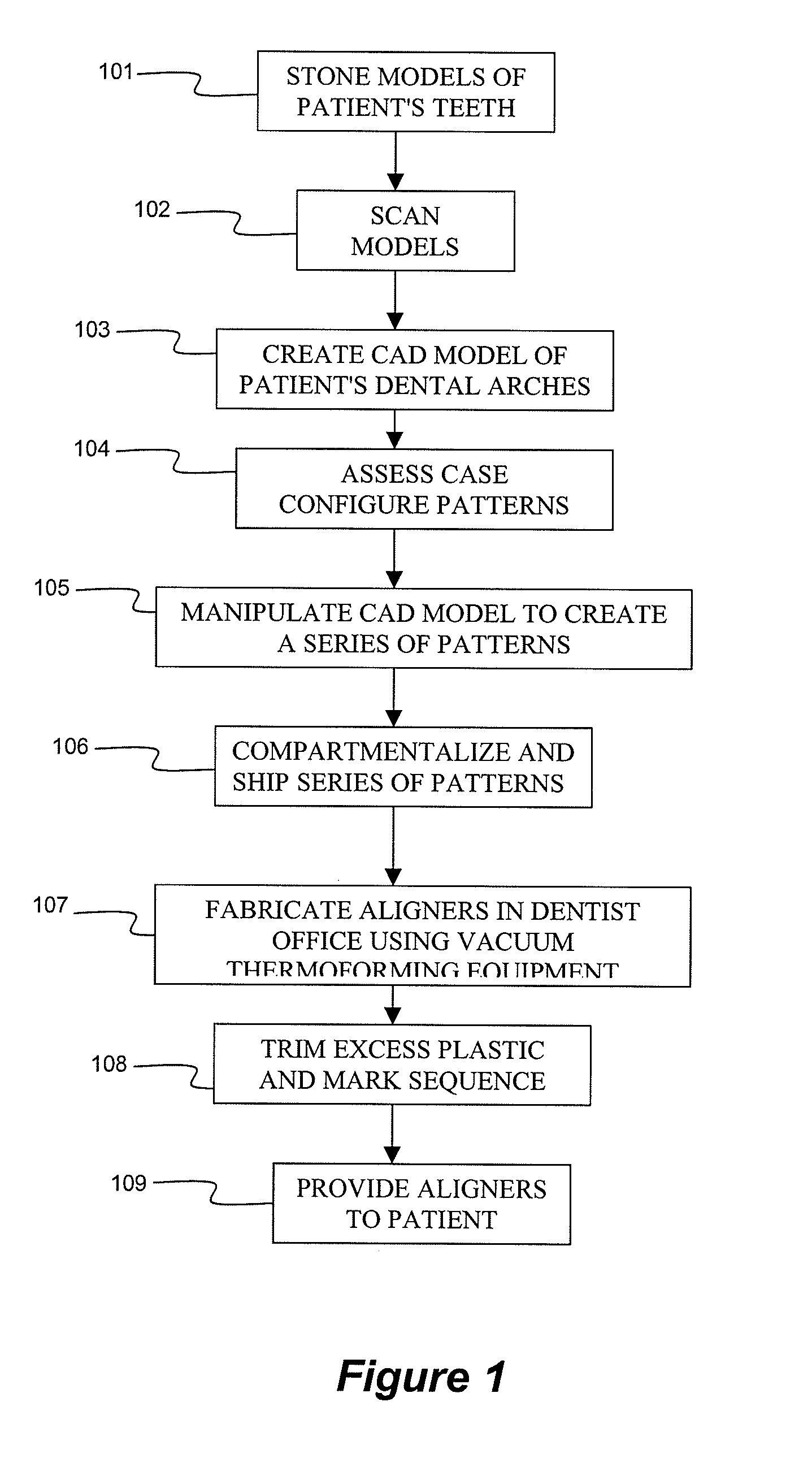System and method for fabricating orthodontic aligners
- Summary
- Abstract
- Description
- Claims
- Application Information
AI Technical Summary
Benefits of technology
Problems solved by technology
Method used
Image
Examples
Embodiment Construction
[0023]The orthodontics industry has generally focused their efforts on delivering the end product, i.e., the sequential orthodontic aligners, to the patient and / or the dentist, in the ready-to-wear final form. As described more fully below, in the present invention, the orthodontic aligners are fabricated at the dentist's office, or alternatively, in a convenient local laboratory. The dentist will have the ability to retain the series of patterns for each patient, for example, to replace an aligner that has been lost or damaged by the patient. In addition, it will be possible for the dentist to fabricate more than one aligner on the same pattern of a series. For example, thermoplastic having two different degrees of elasticity or hardness (durometer) may be used to gradually reposition teeth starting with a softer material, i.e., greater elasticity, and gradually increasing the movement with successively harder material, i.e., lower elasticity, as the teeth progress towards the arra...
PUM
 Login to View More
Login to View More Abstract
Description
Claims
Application Information
 Login to View More
Login to View More - R&D
- Intellectual Property
- Life Sciences
- Materials
- Tech Scout
- Unparalleled Data Quality
- Higher Quality Content
- 60% Fewer Hallucinations
Browse by: Latest US Patents, China's latest patents, Technical Efficacy Thesaurus, Application Domain, Technology Topic, Popular Technical Reports.
© 2025 PatSnap. All rights reserved.Legal|Privacy policy|Modern Slavery Act Transparency Statement|Sitemap|About US| Contact US: help@patsnap.com



